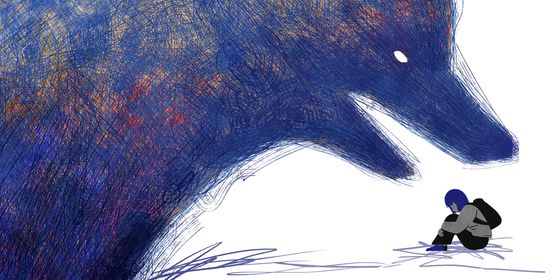Dogged by social stigma and lack of resources, vocational high schools fail to give students the education they need to succeed in modern China
On paper, Xiaoxin’s schedule looks like that of any other overburdened teenager in China’s education system: crammed full of English, math, Chinese, and political theory courses from 6:40 a.m. to 8 p.m., with additional courses on railway signaling, service standards, and x-ray machine usage for her major, railway hospitality.
In reality, though, most of her schoolmates barely get a chance to pick up their x-ray wands in class, so busy are they chitchatting, reading novels, getting into shouting matches with teachers, and catching up on sleep after a night of video-gaming in the dorms—that is, the 50 percent of the class that hasn’t already dropped out of school to find work, or simply stopped showing up to lectures.
And after class, when millions of Xiaoxin’s fellow 18-year-olds around China are hunkering down to cram for the national college entrance exams (gaokao), her descriptions of dorm life consist of tales of burst pipes, hairdryers catching fire, broken washing machines, and classmates brawling over trivial matters like who can borrow a rechargeable card for showering. “Every day, I feel like I’m trying to survive in the wilderness,” she tells TWOC.
Xiaoxin, who asked not to use her real name in this story, is one of the 16.6 million teenagers enrolled in over 10,000 vocational secondary schools around China, making up around 40 percent of all students at high-school level education in the country.
Officially known as “Secondary Professional Schools (中等专业学校),” or zhongzhuan (中专) for short, these institutions teach technical or occupational skills for employment rather than prepare students for university, and have lately come under the public’s scrutiny for underfunding, out-of-date equipment and teaching materials, student apathy and misbehavior, and poor teaching standards.
In October of this year, a viral WeChat article by the account Zhengmian Lianjie referred to China’s vocational students as the “vanished 40 percent,” whose voices are rarely heard in mainstream media. The same month, Chu Chaohui, a researcher at the National Institute of Education Sciences (affiliated with the Ministry of Education), called China’s vocational education system “embarrassing” and “backward” in an interview with Sanlian Lifeweek magazine.
In June, the shocking suicide of a 17-year-old vocational high school student in Shenzhen, who’d been forced to take an internship working on an assembly line and moving crates at an electronics factory, despite majoring in computer studies, brought the low-quality teaching and abusive learning environment of many vocational schools to public attention.
This is despite recent government attempts to reform vocational schooling and vows to “substantially increase the attractiveness of vocational education and its acceptance by society,” a promise made in a three-year vocational education action plan by the Ministry of Education (MOE) and eight other government agencies in 2020. This October, the MOE also announced plans to “reduce the barrier for zhongzhuan students to enter higher education” and to create a “vocational education gaokao” for admissions to university in the future.
Class Struggles: Vocational Schools Still Fail to Provide Opportunities to Students is a story from our issue, “Access Wanted.” To read the entire issue, become a subscriber and receive the full magazine. Alternatively, you can purchase the digital version from the App Store.














